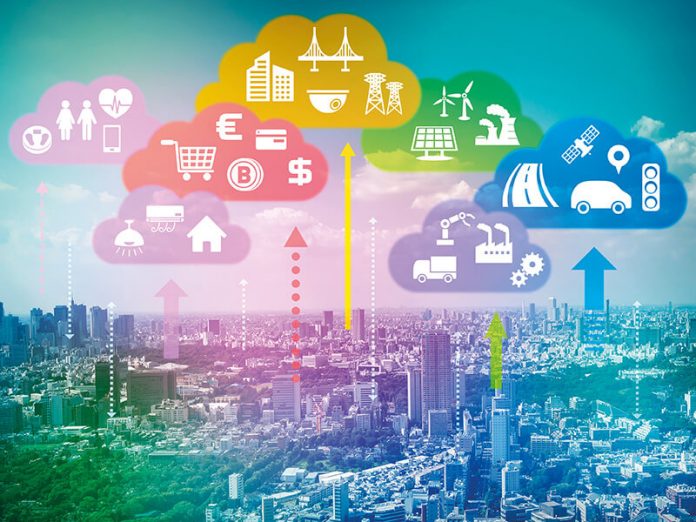
In the age of analytics, how would advertisers take full advantage of the growing potential of big data? In this article, the author elaborates on various applications of data science in advertising which can help advertisers strategically position themselves in today’s highly competitive business environment.
The digital world of today infiltrates people’s lives more pervasively than ever before and this has made online marketing a major business concern for some while it opened a plethora of opportunities for others. The objective of businesses around the world today is to create a product or service of value to the consumer, whether these consumers are individual users, business houses, government agencies or societies. To accomplish this, business houses have tasked marketers and advertisers with the job of finding potential customers, attracting their attention to the product or services offered, translating this attention into purchases and extending their interest towards other similar offerings. However, while doing so, the fundamental challenge marketers and advertisers face today is that they must compete in a market space which is complicated by the emergence of new technological platforms, both online and offline.
Advertising Today
Advertising offers a climatic role in the way it provides revenue to the internet economy which is built on the principle of providing content and value to the end users, free while meeting the most basic objective of marketing, which is Sales. In the current era of Internet Economy – with digital diversity and digital literacy – greater internet traffic is attributed to mobile devices compared to desktops or other devices (Adobe Digital Insights, 2017; CISCO Mobile VNI report, 2015; Deloitte, 2015). In India, for instance, internet traffic from mobile devices is already far ahead of traffic from desktop.
As per ‘Internet in India’ published by IAMAI in 2016, 373 out of a total of 432million internet users access the internet through mobile devices. Moreover, according to recent data, the average mobile user in the US spends an average of 5 hours consuming content on mobile devices alone, with social media and entertainment comprising the majority share of content consumed (Khalaf & Kesiraju, 2017).
This growing trend of mobile-based browsing can be attributed to many factors such as improved digital infrastructure, affordable access to mobile internet, rapid growth in the smartphone market, easy access to low-cost devices, and greater digital literacy. But before anything, it is the complexity of mobile communication in adapting to the users’ preference for need fulfilment which makes mobile an indelible (powerful) tool for marketing. Feature-rich mobile phones lend an element of portability and round-the-clock easy access to the internet which aligns with the users’ preference for more personalised, on-demand entertainment and communication. Unlike in the era of collective and community-based entertainment, mobile phones favour the desire to enjoy content, when convenient to them, with element of relative privacy and anonymity, when desired. Thus, a generalised approach to marketing, relies on messaging centred on the lowest common denominator to appeal to the broadest array of customers, is a less-than-ideal strategy for mobile users.
Transforming Data Based Advertising
Mobile-based transformation in patterns of internet access and content consumption allows advertisers to incorporate personalisation at various levels in their strategies and campaigns. An environment like mobile provides the most favourable conditions for personalised and hyper-targeted advertising, mainly due to three factors. These are:
A mobile provides ubiquitous access to the internet to its user. A user is more likely to have a mobile in his/her possession most of the time and thereby internet on hand.
The limited screen space of a mobile serves as the prime real estate which is disproportionately more likely to capture the attention of the user.
The data is far more extensive on mobile than other devices; more data points can be captured and integrated with greater comprehensiveness (e.g. tapping continuous geographic mobility).
Consequently, data-based advertising in mobile environments yield substantially higher conversions than those on desktops in many circumstances (e.g., 20,000 on mobile versus 5,000 on desktop in one of our recent campaigns for a leading Indian ecommerce provider in the gadgets category).
With data-based mass personalisation, advertisers can group users with similar profiles and present targeted messaging based on these commonalities. In micro personalisation, advertisers can create a more nuanced portrait of each individual user and present ads that cater to that specific user’s needs. Consumer research and advertising has shown that people’s choice of media and content is motivated by specific social and psychological needs (Uses and Gratification Theory on subjective consumer experiences, interests and preferences by McQuail 1994) such as surveillance needs (being aware of and monitoring changes in one’s environment) and diversion needs (escaping mundane or challenging circumstances), to name a few.
Knowing which needs users are aiming to satisfy with a medium can be greatly beneficial in ensuring that the right sort of messaging is provided to users at appropriate times. Researchers suggest that even subtle differences in ads presented to users can alter their behaviour, and consequently, personalised advertising may yield better dividends for businesses. Park and John in year 2012 demonstrated that people who believed that abilities can grow with learning were more influenced by ads based on self-improvement while people who believed in the innate and stable nature of ability were more influenced by ads focused on the opportunity to demonstrate their favourable traits to others, elucidating approaching users subjectively and qualitatively to be a superior approach for better advertising results.
Since it is impossible for content publishing platforms or marketers themselves to control mass and micro personalisation, data science is the technology used by the ad networks to perform these functions ensuring greatest utility to the advertisers and publishers on each ad campaign.
Using Data Sciences in Advertising
Data science is a technology that uses algorithms which enables advertisers to translate insights into action by recording, analysing and classifying data pertaining to users’ interests, preferences, desires and intent through internet browsing, on a large scale. They capacitate ad network agencies to establish patterns of user behaviours, use these patterns to generate predictions of future behaviours and translate these into actionable inputs to deliver personalised ads. Accordingly, businesses benefit because they receive higher conversions and revenues for the same monetary investment and users benefit as ads that are more personally relevant and emotionally appealing based on individual’s unique needs and preferences, reduce the irrelevant clutter on their screen generating value.
Ad networks gather data about users by analysing the source of traffic, past browsing history on a platform, with other data points such as location, time of access, demographic indicators (e.g., age, sex and ethnicity), device, type of browser, operating system, mobile network, and finally, post-campaign data from the business for which the campaign was run (e.g., a user’s lifetime value, amount of purchase etc.). This set of data is then combined into a network or comprehensive user profile which is used to run personalised targeted advertisements. Two main concerns are relevant: when a user is identifiable (i.e., logged in), all the data pertaining to the user is integrated to decide which ad to display on different platforms, screens or devices, and when a user is not identifiable, the data points available are integrated to construct a user profile in real time to display ads which the user is most likely to respond to on a particular medium.
Application of Data Science
Many specific applications of data science are found to serve mobile advertising.
Firstly, data science can facilitate decisions regarding what type of ad should be displayed. For example, a person who predominantly browses technology pages of a news website should be shown a different ad compared to a person who predominantly browses entertainment pages. Moreover, even greater personalisation is accomplished based on, for instance, what type of entertainment the user prefers, whether s/he is primarily interested in TV shows or movies, what language programming s/he likes, what categories (humour, romance, horror etc.) are preferred and so on. Combined with the data points discussed previously, data science enables identification and delivery of ad that would be most relevant to the user; for instance, an English ad prompting installation of Netflix app, or an English ad prompting purchase of a subscription to Netflix, or a regional language ad prompting subscription to Amazon Prime, among several other options. Similarly, two users may both be sourced from fashion pages of different websites, but their browsing histories and individual data points can be used to target micro personalisation down to the level of the preferred brands, preferred accessories and preferred styles.
The second major application of data science to mobile advertising concerns increasing the conversion rate for the advertisers, i.e., maximising the extent to which the recipient of an ad translates to a customer for the business for which the ad is run. In this context, data science can be used to account for the fact that users are likely to experience varying levels of attention, motivation and interest in purchasing at different times, on different mediums and related to different issues. One element of this is ensuring the highest likelihood of conversion, right down to delivery. For instance, analytics can indicate that a user who purchases products from an ecommerce website after midnight is more likely to return products because her/his attention is lowered at night, and thus, purchases are made with less care. Another user may be more likely to purchase in the afternoons because motivation to purchase is higher than when the user is at home in the evenings. This kind of data can be used to ensure that ads on ecommerce websites are displayed at those times and contexts where users’ attention and motivation to purchase are highest so that the final conversion rate is enhanced.
Another element of this application is analysing a user’s response to an ad once it has been shown and integrating this with the available data to determine the subsequent ad strategy for that user, i.e., whether s/he should be shown the same or similar ads, or whether s/he should be shown different ads and when. The issue of re-targeting is relevant here. Data science facilitates decisions regarding similar or different ads that can be shown around a particular area of interest to a user and suitable time for display. Thus, the extent and elasticity of retargeting for each user profile can be determined. The third application of data science to mobile advertising involves real-time ad choice and creative design of ads that are personalised to the user. Advertisers can use data science to determine what kind of messaging a user is most likely to be receptive to and deliver exactly that format and content of messaging in the ad ultimately displayed to the user, within just a couple of moments. The ad is, thus, designed for each individual user in real-time, i.e., there is real-time brand choice, message creation and ad display. For instance, the differences between people sourced from website 1 and 2 can be identified to ensure that different types of messaging are displayed. The simplest example would be of language, such that users sourced from an English language webpage should be shown the ad in English while those sourced from a vernacular website should be shown the ad in that vernacular language. However, this is often a lot more complex as data pertaining to publishing platforms is integrated with a vast amount of data about each individual user to ensure the maximum possible relevance and personalisation. Accordingly, rather than focusing on just bringing the greatest number of users to the platform, the focus is on bringing the greatest number of those users who will make purchases and convert to customers with a high lifetime value. A final application is in minimising user churn; data science can also maximise the profitability of ad campaigns by ensuring that businesses don’t lose newly acquired customers due to lack of relevance. Ad networks can amalgamate data obtained directly from advertisers with data already available to them to focus campaigns towards targeting profiles of users which have previously yielded high lifetime values for advertisers, indicating greater relevance of the ads to those profiles. Thus, an insight regarding the quality of the user is cumulative and can be derived and applied to minimise churn in the future. While we are all living in a data-driven world where the internet-of-things essentially depends upon the ability of technology to accurately collect, record, transmit and use data. Data is the lifeline of most mobile services and applications. The world will likely continue witnessing an increase in the number of mobile devices that are connected to the internet and produce more data than ever before. The time is ripe for mobile advertisers to utilise the vast digital footprint that each of us are leaving behind every moment we browse the internet. While this may raise some concerns around privacy and the nature of the information available to various platforms, ad networks are concerned about recording and using data points of relevance for constructing a digital portrait of a users’ interests, preferences and needs so that the ads shown to them are not only relevant, but facilitate further browsing, purchase and need satisfaction. Doing so, data science can have enormous utility in helping businesses increase their exposure to customers who want their products. And up to the present time, we’ve only managed to scratch its surface. There is a plethora of possibilities in this technology, and whoever can utilise it to the fullest could just be the pioneers of a revolution waiting to happen. [/ms-protect-content]
About the Author References 1. Digital Insights (2017). Media and entertainment generations report. Retrieved from https://www.slideshare.net/adobe/adi – media – entertainment – generations – report – 2017 2. CISCO (2015). Complete Visual Networking Index (VNI) Forecast Retrieved from http://www.cisco.com / c / en / us / solutions/service – provider/visual – networking – index – vni/index.html#~complete – forecast 3. Deloitte (2015). Digital m edia: Rise of on-demand content. Retrieved from https://www2.deloitte.com/content/dam/Deloitte/in/Documents/ technology – media – telecommunications/in – tmt – rise – of – on – demand – content.pdf 4. Internet and Mobile Association of India (IAMAI) (2014). Internet in India. Retrieved from http://www.iamai.in/PRelease_detail. aspx?nid=3498&NMonth=11&NYear=2014l. 5. Khalaf, S.K. & Kesiraju, L. (March 2, 2017). US consumers’ time spent on mobile crosses 5 hours a day. Retrieved from http://flurrymobile.tumblr.com/post/157921590345/us-consumers-time-spent-on-mobile-crosses-5 6. McQuail, D. (1994). Mass Communication Theory: An Introduction (3rd ed.). London: Sage. 7. Park, J.K. & John, D.R. (2012). Got to get you into my life: Do brand personalities rub off on consumers. Journal of Consumer Research, 37, 655-669. Dr. Nidhi Prakash is an organisational psychologist and a faculty member at the Department of Psychology, University of Delhi, Delhi, India. Her studies and research work focus on organisational development and change, knowledge creation and management, psychological contracts at work, work motivation, consumer behaviour and advertising.
Dr. Nidhi Prakash is an organisational psychologist and a faculty member at the Department of Psychology, University of Delhi, Delhi, India. Her studies and research work focus on organisational development and change, knowledge creation and management, psychological contracts at work, work motivation, consumer behaviour and advertising.

































